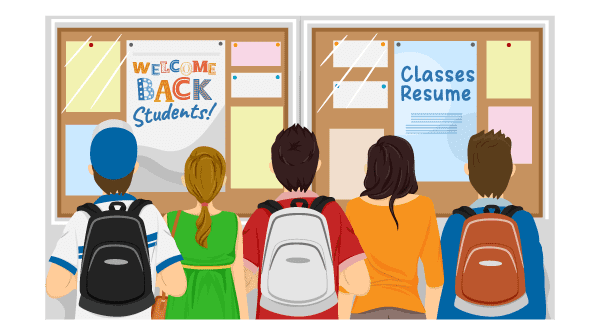
Universities around the country, from California to New York, have closed their campuses and classrooms amid the coronavirus crisis. As the World Health Organization (WHO) declared the virus a global pandemic and threat to our health and safety, it’s safe to say that this virus is about to impact our lives long after its imminent threat is maintained. Across the country, colleges, high schools, middle schools, and any other educational institution have closed.
To contain the spread of the virus, social distancing is mandated, with groups of 10-people or less recommended by the President. Educational settings could become a hotbed of viral infections if not monitored, so for many best course of action, for right now, has been close up shop and take classes online. Colleges are doing their best to deal with this sudden virus-induced implosion. In some cases, schools will offer online instruction for a limited period. In other cases, students can count on courses remaining online through the end of the semester.
Some colleges are telling students not to return to campus for 14-days. Others are asking that students who recently traveled to China, Italy, or South Korea not return to the college for the remainder of the semester or until they have undergone testing.
What Is This Doing to 2020 Enrollment?
Coronavirus is impacting college enrollment in a big way. While not as applicable to most career colleges, many U.S. universities are reliant on Chinese students and others studying abroad in the U.S. from China. Every year, colleges have seen a 1.2% increase in Chinese student enrollment, but this number could drop drastically for the 2020 fall enrollment period. Additionally, the Chinese students currently in the U.S. enrolled at our colleges are wanting to go home and be with their families, as well as help out their country. Many are dropping out or are considering dropping out before the fall semester.
From an international perspective, in Australia, educational institutions expected a total of 107,000 Chinese students to return in the coming months for their next semester will not be able to resume class.
Or take the Babson College in the U.S. Their MBA program is 78% international students, according to Courtney Minden, Vice President of Enrollment Management. As they struggle to develop an online curriculum, their entire program could transform fundamentally by next semester.


Despite this reality, we must not lose sight of hope. This virus will pass, and things will get back to normal in the future. There will most likely be fallout, and some predict a significant dip in college enrollment for the remainder of 2020. But there is still a high demand for education and training, and career colleges and other post-secondary institutions must adjust their marketing and enrollment approaches to accommodate these changing times.
There are still things schools can do to convince those unsure about higher education in 2020 to commit to improving their lives. Now, more than ever, post-secondary schools need to be strategic and creative as they reach out to existing and untapped audiences—especially audiences whose worldviews and life goals may have been suddenly upended by this crisis. We may not know what’s in store for the next few months, but it’s still important to help prospective students stay on track to reach their educational and career goals. The show must go on.
Education is the bedrock of any functioning society, and both young students and adults returning to school to obtain a new skill must continue to enrich themselves with knowledge. This very knowledge holds the solutions to crises like the coronavirus. Working together to keep educational institutions accessible and approachable in 2020 will bring all of us out on the other side of this stronger and more prepared for what will surely be a new normal in the aftermath of this crisis.

